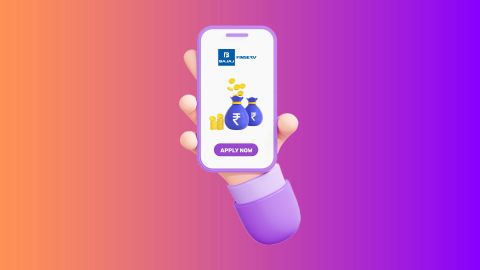An EPF loan, also known as an EPF advance, allows employees to withdraw funds from their Employees’ Provident Fund (EPF) account for specific needs. Understanding the differences between an EPF advance and a personal loan can help you choose the best financial option based on your requirements, repayment terms, and eligibility.
What is an EPF advance withdrawal or EPF loan?
EPF stands for employee provident fund. The goal of the EPF is to help employees save money for their retirement by setting aside a small portion of their salaries each month. Workers in the public and private sectors are both eligible to receive these benefits.
Withdrawing from a EPF account has been a long and time-consuming process in the past. The government of India has, however, taken steps to make it much easier to withdraw funds from EPF accounts. According to the new rules, EPFO subscribers will be able to use the non-refundable EPF advance or EPF loan facility and take out up to three months' basic salary plus dearness allowance (DA) or 75% of their accumulated corpus, whichever is lower.
What are the conditions for taking out EPF advance or the loan against EPF?
To take out an Employee Provident Fund (EPF) advance, certain conditions must be met:
- The individual must be a registered EPF member with an active account
- And must have completed a minimum period of service.
- The advance can be used for specific purposes like medical emergencies, housing, education, or marriage, as outlined by the EPF authorities.
What are the EPF advance or early EPF withdrawal rules?
An employee may perform EPF withdrawal under certain circumstances, such as retirement after reaching the age of 55, unemployment for two consecutive months, permanent migration abroad, or specific financial requirements such as:
- In purchasing of a land or a house
- Education
- Marriage
- Illness and Medical Treatment
- In case of company lock-out
- Retirement
- Unemployment
To take out an Employee Provident Fund (EPF) advance, certain conditions must be met. The individual must be a registered EPF member with an active account and must have completed a minimum period of service. The advance can be used for specific purposes like medical emergencies, housing, education, or marriage, as outlined by the EPF authorities.
What circumstances would allow an employee to withdraw their EPF balance?
An employee may perform EPF withdrawal under certain circumstances, such as retirement after reaching the age of 55, unemployment for two consecutive months, permanent migration abroad, or specific financial requirements like purchasing a house, medical emergencies, or higher education for themselves or family members.
What is a short-term personal loan?
Loans that can be repaid in a matter of 1-2 years are referred to as short-term personal loans. These loans are unsecured and hence do not require any collateral. After the loan is approved, these funds are instantly credited to your bank account. Quick repayment of funds is the reason that these loans are termed "short-term loans”.
An applicant must meet eligibility requirements set by the lender to avail of a short-term personal loan.
What are the conditions for taking out a short-term personal loan?
Obtaining a personal loan necessitates meeting certain conditions. Lenders typically require a good credit score, steady income, and a low debt-to-income ratio. Borrowers must be of legal age and often need to provide identification, proof of income, and other documents. Loan eligibility and terms vary, but meeting these criteria increases the likelihood of approval and favorable loan terms.
EPF Loan vs Personal Loan - Which is better?
- Loan amount:
The maximum loan amount that can be borrowed through an EPF advance can be lower than a short-term personal loan. An EPF advance amount is based on the employee's EPF balance . Moreover, you can only withdraw from your EPF account for specific reasons like a wedding or higher education.
In comparison to EPF, loan amount for a short-term personal loan is likely to be higher and is completely based on factors including the borrower's income, credit score, and repayment capacity. Moreover, there’s no restriction on the use of funds borrowed. - Repayment tenure:
An EPF advance is essentially a withdrawal from your existing contribution and hence, it does not have any repayment tenure as such. However, given the compounding nature of the program, it does have an adverse impact on your long-term savings and the amount you would get at the time of retirement.
In contrast, the payback duration for a short-term personal loan is selected by the borrower within a predetermined tenure that often ranges between a few months to three years. - Eligibility requirements:
EPF advance and short-term personal loan eligibility requirements are very different from one another. To qualify for an EPF advance, an individual must have an active EPF account and have contributed to the plan for a specified number of years. The maximum amount that an individual can withdraw is equivalent to three months of their basic pay and dearness allowance (DA), or the 75% of their EPF share and interest, whichever is lower. In contrast, to qualify for a short-term personal loan, a borrower must have a good credit score, a reliable income source, and meet personal loan eligibility set by the lending institute. The amount an individual can borrow relies on their creditworthiness and their capacity to repay the loan within the designated time limit. - Interest rates:
The key difference between an EPF advance and a short-term personal loan lies in the interest rates. EPF advances have no interest charges, while personal loans come with varying interest rates depending on the lender. The EPF account currently offers an annual interest rate of 8.5%, so withdrawing funds means missing out on this compounded interest. This opportunity cost can make the effective loan against PF interest rate quite high. If you wish to borrow, you can easily PF loan apply online through various platforms, but it’s important to weigh the benefits against the interest you forgo.
In contrast, borrowers have to pay a certain rate of interest on personal loan. These rates can range between 10% to 31% per annum
Given that most individuals may not like to compromise on their retirement funds a short term personal loan may be a safer bet than withdrawing from your EPF account.
If you need quick funds during a financial emergency, an EPF personal loan can be an excellent choice. You can avail a loan on EPF for up to Rs. 55 lakh with minimal documentation and fast fund disbursal. The loan offers flexible repayment terms ranging from 12 months to 96 months, allowing you to manage your finances comfortably. Additionally, using a PF loan calculator helps you estimate your monthly EMIs easily, making repayment planning stress-free and convenient.




